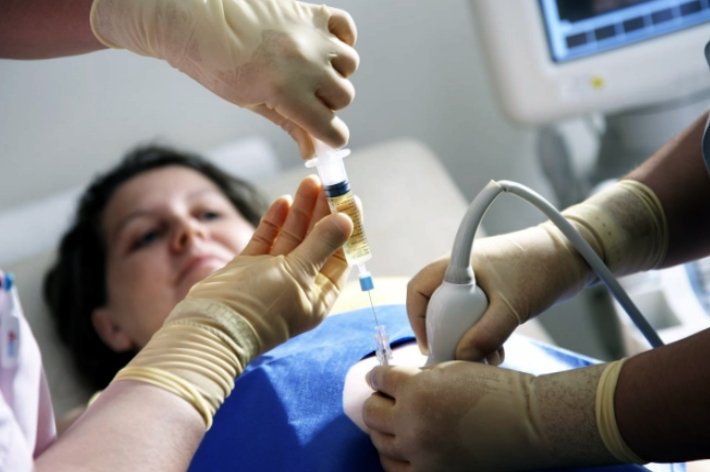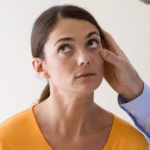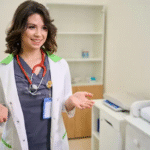
What Is An Abdominal Wall Defect?
What Is an Abdominal Wall Defect?
An abdominal wall defect is a problem with how a baby’s abdominal wall forms. Body parts such as the intestines, stomach, or liver can push through this opening and bulge out from the body. These anomalies are usually detected during prenatal ultrasound between the 10th and 14th week of pregnancy.
Kinds of Abdominal Wall Defects
The two most common types of abdominal wall defects are:
-
Omphalocele
- Occurs at the umbilical cord’s root
- Abdominal organs protrude into the umbilical cord and are covered by a membrane.
- Commonly involves the intestines, stomach, or liver.
- Often coexists with other congenital anomalies, especially heart defects and chromosomal disorders like trisomy 13, 18, and 21
- May occur with syndromes such as Beckwith-Wiedemann, CHARGE, or VACTERL
-
Gastroschisis
- A right-sided defect near the umbilical cord
- Organs, typically the intestines, poke through the opening and are not covered by a protective membrane
- Not usually seen in genetic syndromes
- Exposure to amniotic fluid and decreased blood supply can cause damage
Causes and Risk Factors
Omphalocele
- This happens when the intestines fail to return to the body during fetal development
- Strongly linked to genetic and chromosomal abnormalities
- 30–60% of cases show karyotype abnormalities
Gastroschisis
- The exact cause is unknown
- Theories include tissue ischemia or gut mucosal injury
- Young maternal age (<20 years) is a significant risk factor
- Other risks:
-
- Use of vasoconstrictor medications (e.g., pseudoephedrine, aspirin)
- Smoking, alcohol, or drug use
- White race
Diagnosis and Demographics
- Usually diagnosed prenatally via ultrasound
- Both conditions are rare, seen in about 1 in 5,000 live births
- Males and females are affected equally
- Omphalocele is often part of broader syndromes; gastroschisis is usually an isolated defect
Symptoms and Complications
Omphalocele
- It can cause breathing problems due to underdeveloped lungs
- Frequently linked with IUGR (intrauterine growth restriction) and prematurity
- Common complications include:
-
- Gastroesophageal reflux
- Difficulty feeding
- Frequent lung infections or asthma
- Heart defects
Gastroschisis
- May cause:
-
- Inflammation or damage to the intestines
- Twisting (volvulus), blockages (atresia), or perforations
- Short bowel syndrome from tissue loss
- Infections: sepsis, ileus, and catheter-related issues
Treatment
Immediate Post-Birth Care
- Focus on organ protection and temperature control, especially for gastroschisis
- Supportive care like orogastric tubes, IV fluids, and ventilation
Gastroschisis
- Primary closure if organs can be safely returned
- Staged closure with a preformed silo if immediate closure isn’t possible
- Surgery may be needed for intestinal damage or abnormalities
Omphalocele
-
Large defects:
-
- Treated initially with silver sulfadiazine cream and body wrapping to promote skin growth
- Surgical repair is delayed for 6 months to 2 years
-
Small defects:
- It may be closed early or with delayed surgery, depending on the baby’s health
Prognosis and Follow-Up
Gastroschisis:
- Mortality rate: 4–7%, primarily due to bowel injury
- Most infants recover well and lead everyday lives
Omphalocele:
- Isolated cases do well (10% mortality)
- If other abnormalities exist, mortality can rise up to 60%
Adult Outlook
If the child survives infancy, the long-term prognosis is usually good.
Possible long-term issues include:
- Scarring
- Occasional abdominal pain
- GERD (acid reflux)
Genetics and Inheritance
- Most anterior abdominal wall defects are sporadic and non-syndromic
- If part of a genetic syndrome, inheritance follows the pattern of that syndrome
- No single gene mutation has been linked directly to these defects
Conclusion
| Feature | Omphalocele | Gastroschisis |
| Location | Midline (at the umbilical cord) | The right of the umbilical cord |
| Covering | Yes (sac present) | No |
| Associated Syndromes | Yes (e.g., Beckwith-Wiedemann) | Rare |
| Organ Involvement | Liver, intestines, stomach | Mostly intestines |
| Risk Factors | Genetic syndromes | Young maternal age, smoking, and drug use |
| Treatment | Delayed or primary surgery | Primary or staged surgery |
| Prognosis | Depends on other anomalies | Generally good if isolated |
For more information, go to the Health Care Tips Hub.






